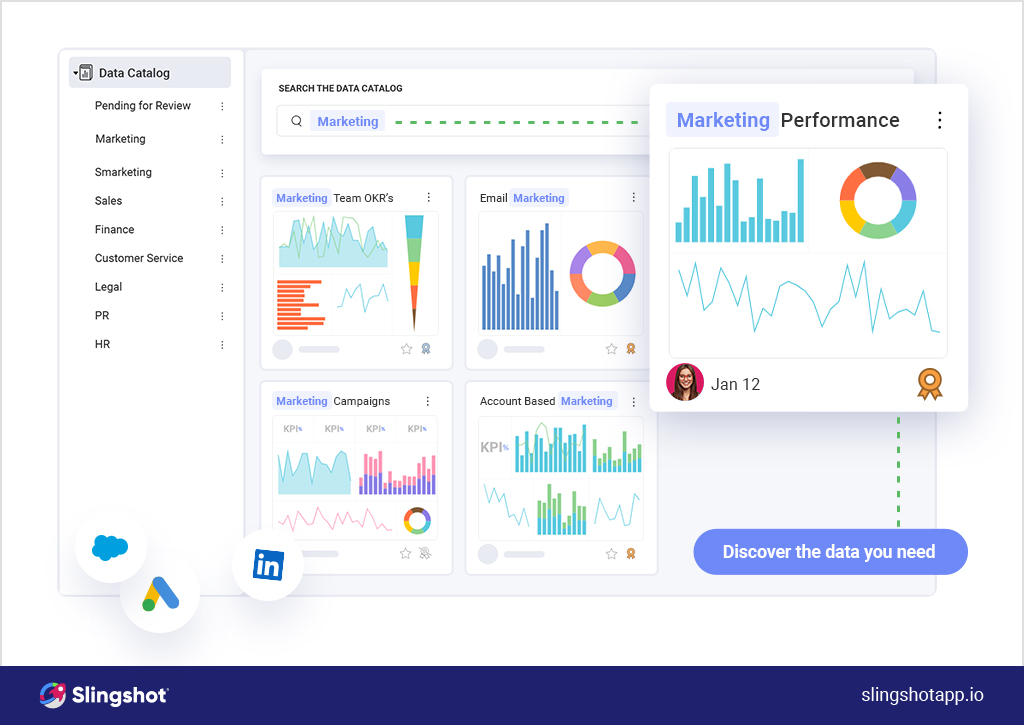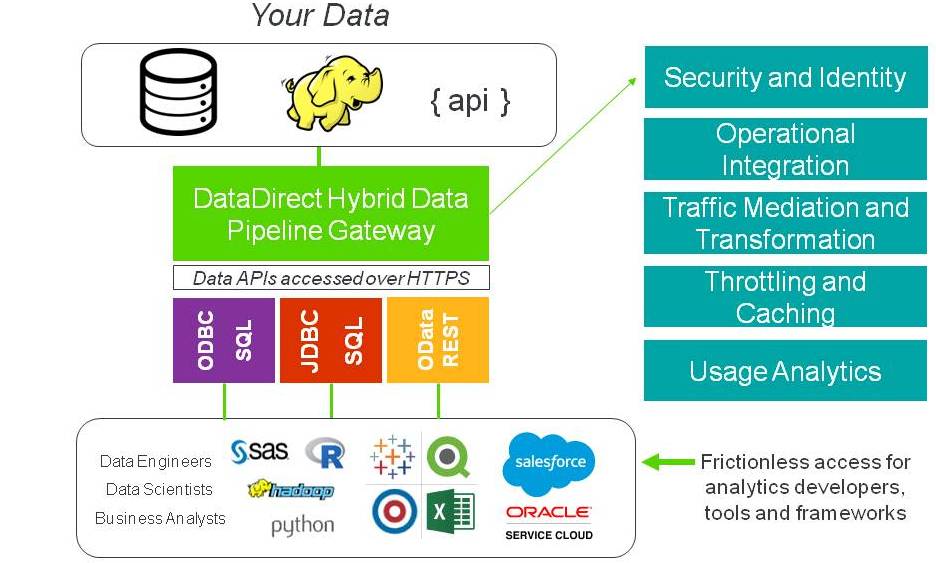Data analytics is essential for businesses today. Software as a Service (SaaS) offers powerful solutions for this need.
SaaS for data analytics simplifies complex tasks. It provides real-time insights, aiding decision-making. Businesses of all sizes benefit from these tools. SaaS platforms are accessible and cost-effective. They eliminate the need for heavy infrastructure. Instead, they offer scalable, cloud-based solutions.
This makes data analytics more accessible. Companies can focus on insights rather than managing software. The ease of use and flexibility of SaaS tools drive their popularity. In this blog, we will explore how SaaS for data analytics can transform your business operations, improve efficiency, and provide actionable insights.

Introduction To Saas For Data Analytics
In today’s digital age, data analytics plays a crucial role in business decision-making. Leveraging Software as a Service (SaaS) for data analytics can offer significant advantages. This section will introduce the concept of SaaS for data analytics, its importance, and how it can benefit your organization.
Table of Contents
What Is Saas?
SaaS stands for Software as a Service. It is a software distribution model where applications are hosted by a service provider. Users access these applications over the internet. SaaS eliminates the need for installing and maintaining software. Instead, users can access the service via a web browser.
Typical features of SaaS include:
- Subscription-based pricing
- Automatic updates and patch management
- Scalability and integration options
- Accessibility from any internet-enabled device
Importance In Data Analytics
Data analytics involves examining data sets to draw conclusions. SaaS for data analytics simplifies this process. Here are some key benefits:
| Benefit | Description |
|---|---|
| Cost-Effective | No need for expensive hardware and software purchases. |
| Scalable | Adjust resources based on your needs. |
| Accessible | Access data analytics tools from anywhere. |
| Up-to-date | Always use the latest version with automatic updates. |
These benefits make SaaS an attractive option for businesses. It allows them to focus on analyzing data rather than managing software.
In summary, adopting SaaS for data analytics can streamline operations and enhance productivity. It provides a flexible, cost-effective solution for modern data challenges.
Benefits Of Saas In Data Analytics
Software as a Service (SaaS) is changing data analytics. It provides many benefits that make it a preferred choice for businesses. Below are some key advantages.
Cost Efficiency
SaaS offers a cost-effective solution for data analytics. Traditional software requires a significant upfront investment. SaaS eliminates this need. Businesses pay a subscription fee. This fee is usually monthly or yearly. It covers software usage and maintenance.
There are no hidden costs. No need for expensive hardware or IT staff. SaaS providers handle all technical aspects. This includes updates and security. The result is lower total cost of ownership (TCO).
Scalability
Scalability is another advantage of SaaS in data analytics. Businesses can easily scale their usage up or down. This flexibility is crucial for growing businesses. When data needs increase, they can upgrade their plan. If needs decrease, they can downgrade.
There is no need for physical infrastructure changes. SaaS platforms are built to handle various workloads. They can process large volumes of data efficiently. This ensures smooth operations and consistent performance.
Key Features Of Saas For Data Analytics
Data analytics is crucial for businesses today. SaaS for Data Analytics offers powerful features to help organizations gain insights quickly. Below, we discuss key features that make SaaS for Data Analytics essential.
Real-time Analytics
Real-time analytics is a significant feature of SaaS for Data Analytics. It allows users to get instant insights from live data streams. This helps in making quick decisions based on the latest information. Businesses can monitor their operations and respond to changes immediately.
With real-time analytics, companies can:
- Track customer behavior instantly
- Identify trends as they happen
- Optimize processes in real-time
Real-time analytics ensures that businesses stay ahead of the curve by leveraging current data.
User-friendly Interfaces
User-friendly interfaces are another key feature of SaaS for Data Analytics. These interfaces are designed to be intuitive, allowing users to navigate easily. This reduces the learning curve and increases productivity. Even non-technical users can perform data analysis without much training.
Key aspects of user-friendly interfaces include:
- Drag-and-drop functionality
- Customizable dashboards
- Interactive visualizations
These features make it easy for users to interact with data and generate insights. A simple and intuitive interface enhances the overall user experience.
In summary, real-time analytics and user-friendly interfaces are essential features of SaaS for Data Analytics. These features enable businesses to make data-driven decisions quickly and efficiently.

Popular Saas Tools For Data Analytics
Data analytics has become crucial for businesses. Software as a Service (SaaS) tools offer efficient solutions for data analytics. These tools help companies make sense of their data and gain insights. This section discusses some popular SaaS tools for data analytics.
Overview Of Leading Tools
Many SaaS tools stand out in data analytics. Here is a brief overview of some leading ones:
- Tableau: Known for its interactive data visualization capabilities. It helps users create detailed charts and dashboards.
- Google Analytics: Tracks and reports website traffic. It offers comprehensive insights into user behavior.
- Power BI: A powerful tool by Microsoft. It integrates with other Microsoft products and offers robust data analysis.
- Looker: Provides modern data exploration and business intelligence. It connects directly to databases.
- Domo: A cloud-based platform. It offers various data connectors and real-time data analysis.
Comparison Of Features
Comparing features helps in choosing the right tool. Here is a comparison of the key features of these tools:
| Tool | Key Features | Strengths | Weaknesses |
|---|---|---|---|
| Tableau | Data Visualization, Dashboards | Interactive, User-friendly | High Cost |
| Google Analytics | Web Traffic Analysis, User Insights | Free, Comprehensive | Limited to Web Data |
| Power BI | Data Integration, Custom Reports | Robust, Integrates with Microsoft | Complex Setup |
| Looker | Data Exploration, Real-time Analysis | Modern, Direct Database Connection | Expensive |
| Domo | Data Connectors, Real-time Data | Cloud-based, Scalable | Costly |
Each tool has unique strengths and weaknesses. Consider your needs and budget. Choose the tool that best fits your requirements.
Implementation Strategies
Implementing SaaS for data analytics can be a game-changer for businesses. It enhances data handling and provides actionable insights. The right strategy ensures smooth integration and maximizes benefits. Here, we explore key strategies for successful implementation.
Choosing The Right Tool
Selecting the appropriate SaaS tool is vital. It should align with your business needs and technical capabilities. Consider the following factors:
- Scalability: The tool should grow with your business.
- Usability: Ensure the interface is user-friendly.
- Cost: Compare pricing plans and features.
- Security: Verify data protection measures.
- Support: Check for available customer support and resources.
Conduct a thorough evaluation of potential tools. Gather feedback from different departments. This helps in making an informed decision.
Integration With Existing Systems
Integrating the new SaaS tool with existing systems is crucial. Proper integration ensures seamless data flow and minimizes disruptions. Follow these steps for a smooth integration process:
- Assess Compatibility: Check if the new tool works with current systems.
- Data Mapping: Identify how data will transfer between systems.
- APIs: Use APIs for efficient communication between platforms.
- Testing: Conduct thorough testing to ensure integration works.
- Training: Provide training to staff on the new system.
Keep communication channels open during the integration phase. Address issues promptly to avoid delays. Document the process for future reference.
| Integration Step | Description |
|---|---|
| Assess Compatibility | Ensure the new tool works with current systems. |
| Data Mapping | Identify data transfer methods between systems. |
| APIs | Utilize APIs for platform communication. |
| Testing | Test the integration thoroughly. |
| Training | Train staff on the new system. |
Effective implementation strategies ensure a smooth transition. They help in leveraging the full potential of SaaS for data analytics.

Challenges And Solutions
Software as a Service (SaaS) for data analytics is transforming how businesses handle data. But, with great potential come some challenges. Understanding these challenges and their solutions is vital for optimal use. Let’s dive into the details.
Data Security Concerns
Data security is a top concern for businesses using SaaS for data analytics. Sensitive data can be at risk of breaches. Ensuring data privacy is crucial.
Solutions:
- Use end-to-end encryption for all data transmissions.
- Implement multi-factor authentication for accessing the SaaS platform.
- Regularly update and patch systems to prevent vulnerabilities.
Managing Large Data Volumes
Handling large volumes of data can be challenging. Efficient data management is key to getting valuable insights.
Solutions:
- Use cloud storage solutions for scalability and flexibility.
- Implement data compression techniques to reduce storage needs.
- Leverage data partitioning to improve query performance.
Addressing these challenges with the right solutions can help maximize the benefits of SaaS for data analytics. Stay secure and efficient to harness the full potential of your data.
Future Trends In Saas For Data Analytics
The future of SaaS for Data Analytics is exciting. It promises to bring new tools and capabilities to businesses. This section will explore key trends shaping the future. These trends include AI and Machine Learning, and Enhanced Data Visualization.
Ai And Machine Learning
AI and Machine Learning are changing data analytics. SaaS platforms are integrating these technologies to offer smarter insights.
AI can process large datasets quickly. It finds patterns that humans might miss. This leads to better decision-making and efficiency.
- Predictive analytics: AI can forecast future trends.
- Automation: Machine Learning automates repetitive tasks.
- Personalization: AI offers customized user experiences.
These technologies make data analysis faster and more accurate. They help businesses stay competitive.
Enhanced Data Visualization
Data visualization is becoming more advanced. SaaS platforms offer new ways to present data clearly.
Enhanced visual tools help users understand complex data quickly. They turn raw data into visual stories.
- Interactive dashboards: Users can explore data in real-time.
- 3D charts: More dynamic and engaging visualizations.
- Custom reports: Tailored visualizations for specific needs.
Better visualization tools improve communication. They make it easier to share insights with stakeholders.
These trends show the potential of SaaS for Data Analytics. Embracing these technologies can drive innovation and growth.
Case Studies
Exploring real-world applications of SaaS for Data Analytics can provide valuable insights. Case studies reveal how different industries leverage these solutions to enhance their data-driven decision-making processes. In this section, we delve into various success stories and lessons learned from organizations utilizing SaaS for Data Analytics.
Success Stories
Many companies have found significant value in implementing SaaS for Data Analytics. Below are a few noteworthy examples:
| Company | Industry | Outcome |
|---|---|---|
| Company A | Healthcare | Improved patient care through predictive analytics |
| Company B | Retail | Increased sales by 20% with customer behavior analysis |
| Company C | Finance | Reduced fraud by 30% using real-time data monitoring |
Company A in the healthcare sector utilized SaaS for predictive analytics. This improved patient care and allowed for better resource allocation.
Company B leveraged customer behavior analysis. This led to a 20% increase in sales. They could tailor their marketing strategies more effectively.
Company C in the finance industry implemented real-time data monitoring. They saw a 30% reduction in fraud, which enhanced their security measures.
Lessons Learned
While success stories highlight the benefits, understanding the lessons learned is equally crucial. Here are some key takeaways:
- Data Quality: Ensure your data is clean and accurate. Poor data quality can lead to incorrect insights.
- Integration: Seamless integration with existing systems is vital. This can prevent data silos and enhance efficiency.
- Scalability: Choose a solution that can scale with your business. This ensures long-term viability.
- User Training: Invest in training for your team. Well-trained users can fully leverage the analytics capabilities.
- Continuous Improvement: Regularly update and refine your analytics strategies. This keeps your approach relevant and effective.
Companies often overlook the importance of data quality. Clean and accurate data is the foundation of reliable insights. Seamless integration with existing systems is also critical. It helps prevent data silos and ensures a smooth workflow.
Scalability is another key lesson. A scalable solution can grow with your business, ensuring long-term success. Additionally, investing in user training pays off. A well-trained team can maximize the benefits of SaaS for Data Analytics.
Finally, continuous improvement is essential. Regular updates and strategy refinements keep your approach effective and up-to-date.
Frequently Asked Questions
What Is Saas For Data Analytics?
SaaS for data analytics is a cloud-based service. It provides tools to analyze and visualize data. It is accessible via the internet.
How Does Saas Improve Data Analysis?
SaaS improves data analysis by offering scalable tools. It allows real-time data processing and collaboration. It reduces the need for complex infrastructure.
What Are The Benefits Of Saas For Data Analytics?
The benefits include cost efficiency, scalability, and ease of use. It offers real-time data insights and collaboration features. It also reduces IT management burden.
Can Saas Handle Big Data Analytics?
Yes, SaaS can handle big data analytics efficiently. It leverages cloud computing for processing large datasets. It provides scalable solutions for complex data needs.
Conclusion
SaaS for data analytics offers many benefits. It simplifies complex tasks. Businesses can make smarter decisions. Costs stay lower. Implementation is quick and easy. Flexibility grows with your needs. Real-time insights become accessible. Collaboration becomes smoother. Overall, SaaS tools drive efficiency.
They are a valuable asset. Consider integrating them into your strategy. Your business will thank you.



Leave a Reply